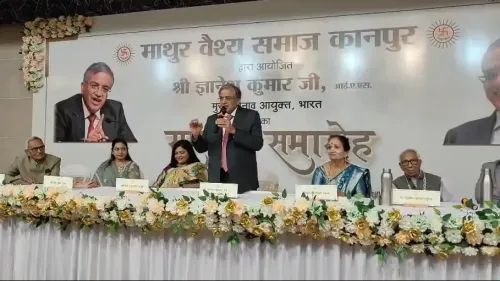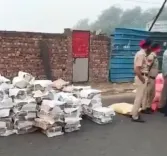Could Nepal's Recent Turmoil Signal a Monarchy Comeback?

Synopsis
Key Takeaways
- Political instability has plagued Nepal since 2008, leading to calls for monarchy restoration.
- The current protests reflect widespread dissatisfaction with the ruling government.
- Experts deem the return of the monarchy as unlikely due to constitutional barriers.
- Chief Justice Sushila Karki has been appointed as an interim leader by protesters.
- Balvendra Shah, or Balen, is gaining recognition among the youth as a potential leader.
New Delhi, Sep 10 (NationPress) Following the enormous Gen Z uprising, the Prime Minister, President, and numerous ministers have resigned in Nepal. The unrest resulted in over 20 fatalities, and both the Parliament and the Supreme Court were engulfed in flames. The pressing question now is: what lies ahead for Nepal?
The collapse of the K.P. Oli administration is a clear indication that democracy has faltered once more in Nepal. Since the adoption of democracy in 2008, every ruling government has faced instability. The nation has experienced 14 shaky coalition governments over the past 17 years, highlighting systemic issues.
In the past 48 hours, speculation has arisen about a potential return of the monarchy that once governed Nepal.
This inquiry stems from a major demonstration held a few months ago by the Rashtriya Prajatantra Party, alongside pro-royalists, Hindu nationalists, and anti-federalists, advocating for the monarchy's reinstatement.
The demonstrators called for the monarchy's restoration and sought the former king's return as head of state. They also pushed for the revival of Hinduism as Nepal's state religion, a sign that the Oli government failed to heed.
Oli dismissed the protests, asserting that the monarchy's return was impossible. However, he overlooked the underlying discontent with the government and the people's urgent desire for change.
Many believe that the nation was more stable under monarchical rule.
In 2008, the 240-year reign of the Shah dynasty ceased. The flag was lowered from the main palace in Kathmandu, marking the end of the world’s last Hindu monarchy.
This conclusion was also preceded by widespread protests. King Gyanendra ascended the throne in 2002 after a tragic massacre claimed the lives of his brother King Birendra and his family. Initially, he acted as a constitutional monarch, but in 2005, he seized absolute power.
He dissolved the government and parliament, imprisoned politicians and journalists, and imposed emergency rule, all of which provoked public outrage and ultimately led to his resignation, paving the way for a republic.
Experts suggest that the recent events in Nepal are unlikely to precipitate a monarchy's restoration. The current political landscape and the prophecy associated with it imply that such a return is improbable. Gyanendra’s silence during the protests and now is a clear indication of his lack of intent to reclaim power.
Additionally, the constitutional framework of Nepal as a republic makes any change to this status a complicated endeavor. The mainstream political parties are also firmly against the monarchy's reinstatement, further diminishing its chances.
It is noteworthy to consider a prophecy attributed to Guru Gorakhnath, who blessed Prithvi Narayan Shah, the 18th-century unifier of Nepal, with a monarchy that would last for 11 generations. Supporters of the monarchy assert that this lineage concluded with King Dipendra Shah.
King Dipendra briefly ruled while in a coma following the 2001 royal massacre. This brief reign was interpreted as the fulfillment of Gorakhnath's prophecy, ultimately leading to the abolition of the monarchy in 2008.
Given these events, the prospect of a monarchy's return appears bleak. The Gen Z protesters have appointed Chief Justice Sushila Karki as their interim leader after a series of meetings. She was Nepal's first woman chief justice, though her tenure was cut short due to impeachment over alleged biased judgments.
The protesters have expressed that no politically connected youth should lead, opting for Karki to represent them in upcoming negotiations.
Earlier, there were indications that the protesters wanted Balvendra Shah, commonly known as Balen, as their leader. He has been a vocal supporter of the protests and has shown solidarity with the youth.
A civil engineer and rapper, Balen entered politics and won the mayoral election in Kathmandu in 2022, earning a reputation for his anti-corruption stance.
Time Magazine recognized Balen as one of the Top 100 Emerging Leaders, while The New York Times commended his grassroots approach and transparency.
Considering the developments, experts anticipate that, akin to the situation in Bangladesh, an interim government may be established until new elections are conducted.









